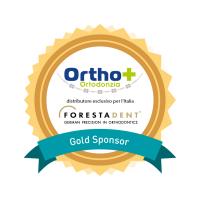Abstract
Orthodontic Therapy in Pediatric Age, Border Between Consent and Dissent, Between Ethics and Deontology
by Di Michele Pietro
The report aims to be a detailed study of the many factors that the orthodontist must consider in the treatment of the paediatric patient in order to achieve a correct result. On the one hand, the initial problem and its development over time must be considered and on the other a series of aspects (urgency in starting treatment, treatment times, types of devices, possible tooth extractions, collaboration and therapeutic alternatives) which necessarily require great attention both in the initial information phase (in order to obtain the consent to treatment) and in all subsequent phases. It’s also possible to have multiple periods of suspension of active treatment. It is therefore essential that the communication is punctual and understandable and necessarily involves both parents, as well as the patient himself, even if he/she is a minor. This allows the cooperation of the family environment and the complete collaboration of the child in all phases of the therapy, limiting the risk of complications such as carious lesions, gingivitis due to poor home oral hygiene, gum recession, root resorption and temporomandibular joint disorders. Therefore, in addition to accepting the treatment plan and obtaining consent, which today is obligatorily written or video-recorded, in the event of prolonged therapy with a change in strategy, it is advisable to collect a further written informed consent from both parents, the legal representative or even of the patient himself as soon as he/she reaches the age of consent. Likewise, it is appropriate to formalize the dissent to perform the orthodontic treatment which, even after complete initial information, is communicated to the doctor. Particular attention should be paid to children with health fragility or hereditary pathologies: the therapy must take into account with great attention to the objectives set in the interest of the child and the real ability to comply with the chair in an individual way. Respecting the professional ethics and the patient's oral health, long and traumatic orthodontic treatments should be avoided where possible: it is understood that in any case consent must be collected and that the minor's collaboration is always fundamental and, if insufficient, also in consideration of the fact that orthodontic therapy is never an emergency service, could suggest the opportunity to postpone the start of treatment.
Learning Objectives
After this lecture, you will be able to understand the importance of proper comunication with the patient
After this lecture, you will be able to you will be able to relate correctly with patients and parents when you present the informed consent and you will arrange for its acquisition
After this lecture, you will be able to you will know how to relate correctly even if the therapy is rejected by the underage/minor patient or by the family
Orthodontic Therapy in Pediatric Age, Border Between Consent and Dissent, Between Ethics and Deontology
by Ceretti Gabriella
The report aims to be a detailed study of the many factors that the orthodontist must consider in the treatment of the paediatric patient in order to achieve a correct result. On the one hand, the initial problem and its development over time must be considered and on the other a series of aspects (urgency in starting treatment, treatment times, types of devices, possible tooth extractions, collaboration and therapeutic alternatives) which necessarily require great attention both in the initial information phase (in order to obtain the consent to treatment) and in all subsequent phases. It’s also possible to have multiple periods of suspension of active treatment. It is therefore essential that the communication is punctual and understandable and necessarily involves both parents, as well as the patient himself, even if he/she is a minor. This allows the cooperation of the family environment and the complete collaboration of the child in all phases of the therapy, limiting the risk of complications such as carious lesions, gingivitis due to poor home oral hygiene, gum recession, root resorption and ATM. Therefore, in addition to accepting the treatment plan and obtaining consent, which today is obligatorily written or video-recorded, in the event of prolonged therapy with a change in strategy, it is advisable to collect a further written informed consent from both parents, the legal representative or even of the patient himself as soon as he/she reaches the age of consent. Likewise, it is appropriate to formalize the dissent to perform the orthodontic treatment which, even after complete initial information, is communicated to the doctor. Particular attention should be paid to children with health fragility or hereditary pathologies: the therapy must take into account with great attention to the objectives set in the interest of the child and the real ability to comply with the chair in an individual way. Respecting the professional ethics and the patient's oral health, long and traumatic orthodontic treatments should be avoided where possible: it is understood that in any case consent must be collected and that the minor's collaboration is always fundamental and, if insufficient, also in consideration of the fact that orthodontic therapy is never an emergency service, could suggest the opportunity to postpone the start of treatment.
Learning Objectives
After this lecture, you will be able to understand the importance of proper comunication with the patient
After this lecture, you will be able to relate correctly with patients and parents when you present the informed consent and you will arrange for its acquisition
After this lecture, you will be able to related correctly even if the therapy is rejected by the underage patient or by the family












